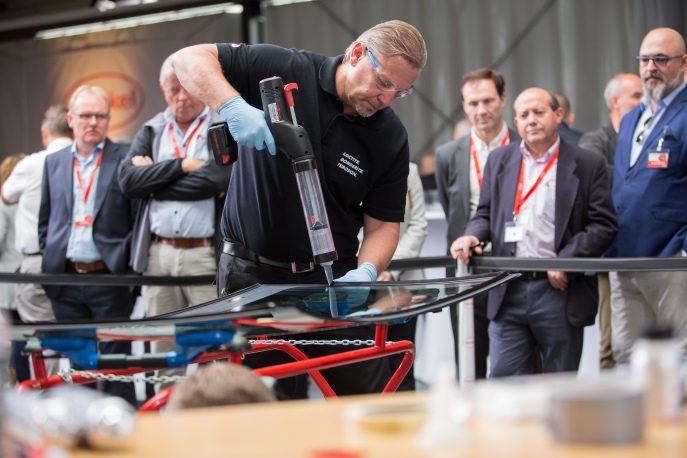
Unless you’re directly involved in manufacturing of cars, even as an engineer you probably rarely think about how much adhesive there is on an average car and what kind of crucial roles it plays.
Within the EU, all new cars must comply with clearly defined safety standards during crash tests. One of the scenarios simulated during these tests is the so-called frontal offset crash, which is responsible for more deaths and serious injuries than any other type of accident. The NCAP (New Car Assessment Program) stipulates that the car collision must be tested and analysed at a speed of 64 km/h and an offset rate of just 40 percent against a deformable barrier. A test has recently been made according to the same parameters, with a used car, to determine exactly how safe it remains after its windscreen has been replaced using the direct glazing adhesive Teroson PU 8730 HMLC.
The test was done in cooperation with an independent facility: crashtest-service.com (CTS) in Münster Germany. Before the test, the guests witnessed the replacement of the windscreen. 30 minutes after the windscreen was bonded – which is the specified drive away time for Teroson PU 8730 HMLC – the test was performed immediately.
The main objective of the test was to show the importance of the windscreen during frontal collisions, because it contributes to vehicle rigidity and supports the passenger airbag in a crash. If the adhesive which holds the windscreen onto the car body failed during the crash, this rigidity, and with it also the functionality of the airbag, would be compromised.
In this case the windscreen bonded with Teroson adhesive, not only withstood the extreme crash test conditions, but also delivered the measured values required for the full functioning of the passenger airbag.